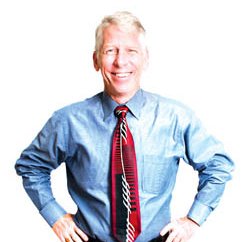
Sacramento State University and UC Davis are 20 miles apart on the map. But they are worlds apart on their vision for a 21st century university. And we are lucky to have both.
UC Davis is on the path to become one of America's finest research institutions. And Sac State, under the inspired leadership of President Robert Nelsen, is on the path to become an “anchor university.”
According to Nelsen, this is “the opposite of the ivory tower. It aims to connect its students, faculty and staff with the community … achieving lasting solutions and improvements through inclusive civic engagement.”
This is a tall order. It requires a major rethinking of virtually the whole Sac State educational experience. A recently released 82-page task force report presents the challenges and opportunities of that transformation.
Internships need to be established. New classes must be formed. Faculty members need to be evaluated less on their publishing and teaching and more on their community involvement. Community-oriented research grants need to be obtained. And the larger Sacramento community needs to connect with its university.
Some of the needs and challenges identified by the task force include: high K-12 absenteeism, polluted neighborhoods, health disparities, rising homelessness and economic growth that does not include all communities.
These are thorny, difficult community problems worthy of academic study. And combining educational theory with real-life practice is so much more satisfying than studying issues abstractly in an ivory tower.
But involvement is also messy. Theories do not always work in real life. And many challenges—such as homelessness or polluted neighborhoods—have potential solutions that are controversial and opposed by powerful vested interests. So this transformation will have its own challenges. But studying social problems in the abstract without testing ideas in the real world is like doing scientific research without any experiments.
Talking with Nelsen last week, he brought up some other points I hadn't seen in the task force report. Unlike UC Davis, where most students come from elsewhere and leave after graduating, most Sac State students live here before they enroll and will remain here after graduation. The students have experienced our housing problems, our pollution issues, the need for more arts and many other issues worthy of study by an anchor university.
Given that Sac State has one of the largest criminal justice departments in the country, Nelsen believes that the university should be more involved in the ongoing community discussion of law enforcement practices.
You do not need to convince a student who is living in their car about the importance of Sacramento developing more affordable housing.
From his appointment in July 2015, Nelsen has been a force for change at Sac State, starting with a commitment to dramatically improve four-year graduation rates. Sac State projects that 20.4% of 2019 graduates completed their course work in four years, up from 8.8% in 2016.
Sacramento State should be Sacramento's University.
